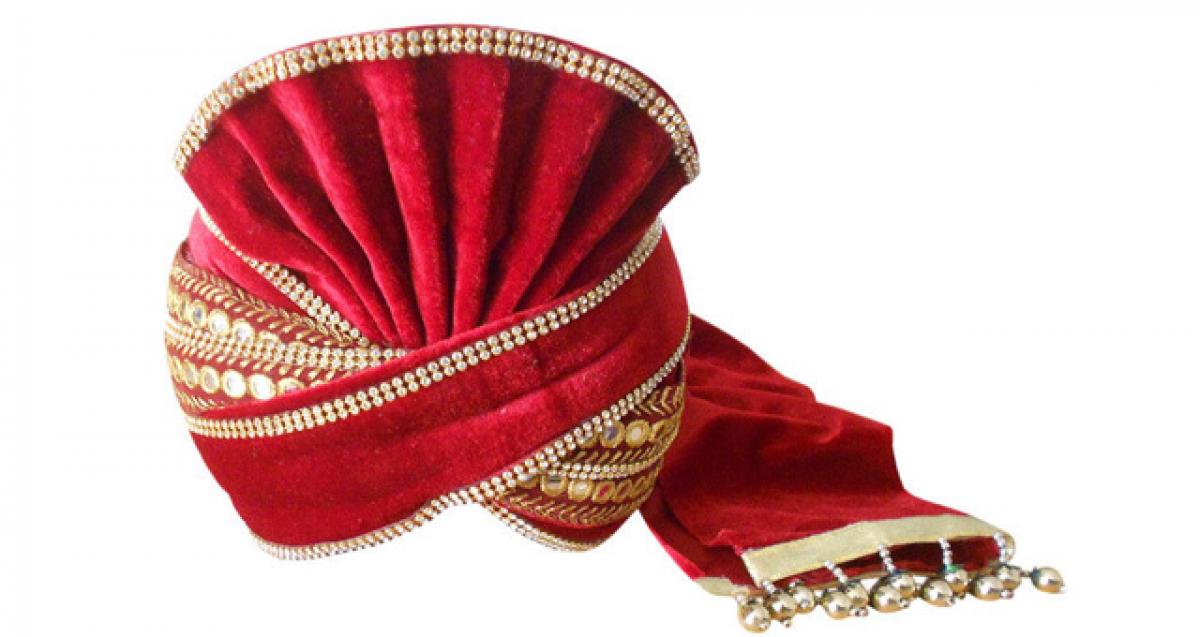Live
- Eatala dares Revanth for debate on Cong 6Gs
- Modi strengthens global ties at Rio de Janeiro
- 55% share price fall costs Ola Electric investors Rs. 38K cr
- Banks report synchronised growth in credit, deposits
- PM Awas 2.0 launched
- Target Kohli’s body, his front pads to put him on back-foot: Healy’s advice to Oz quicks
- LIC accused of thrusting Hindi
- Will make Warangal a la Hyderabad
- Will showcase Indiramma Rajyam: CM
- HC orders attachment of Himachal Bhawan
Just In

A silk pagdi from central India, a Lucknowi satin silk topi and a Banarasi do-pallitopi are among the first ten objects the National Museum has decided to pull out from its reserve collection for an exhibition. The ongoing show on \"Traditional Head Gear of India\" that opened here yesterday, features 10 variants of caps from different regions of 19th century India.
New Delhi: A silk pagdi from central India, a Lucknowi satin silk topi and a Banarasi do-pallitopi are among the first ten objects the National Museum has decided to pull out from its reserve collection for an exhibition. The ongoing show on "Traditional Head Gear of India" that opened here yesterday, features 10 variants of caps from different regions of 19th century India.
From muslin, cotton, silk and wool, variety of materials were used for most ornamental and intricately decorated headgears and later on, jewels were also added to ornate them. While the blue or turquoise satin silk topi from Uttar Pradesh is embroidered with metal thread, the red Banarasi do-pallitopi on display, has brocade and zari work on it. "These were specially designed for occasional and ceremonial bases.
Headgears like a pagdi, pag, turban, or a topi have been an essential part of Indian men's daily attire. They signify social, religious and economic status of a user in the society," museum authorities said. The 'do-palli' or 'round cap' in the northern region became very popular for daily as well as occasional uses around late 19th and early 20th century.
The 'do-palli' or two-layered cap, was stitched from one side and worn on the head. The turbans worn by Marathas and Rajputs had distinct features in terms of fabric, colour, design and ornamentation. A typical Rajasthani turban would be made out of block printed cotton cloth, while a turban from Central India would be made from cotton with woven zari work on it.
A Gujarati topi would be hooded. It was often embroidered with silk thread and mirror work, examples of which can be seen at the exhibition. The collection on display is only a part of the museum's reserve that comprises of as many as two lakh artefacts, scheduled to be showcased in a series of exhibition that are soon to follow. Each show will feature 5-10 selected objects from the reserve collections for about a fortnight.
The initiative is aimed at getting the visitors acquainted with a large number of objects which are not on general display. "It is also to attract their attention on many significant art pieces which generally remain out of focus," the authorities said. Next in line will be exhibitions on lesser known paintings, terracota objects and arms and ammunitions from the museum reserve.

© 2024 Hyderabad Media House Limited/The Hans India. All rights reserved. Powered by hocalwire.com







